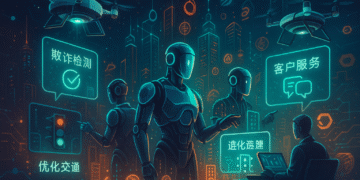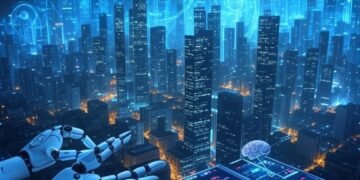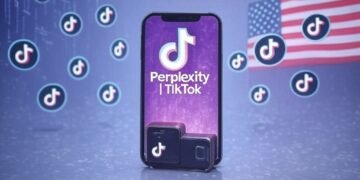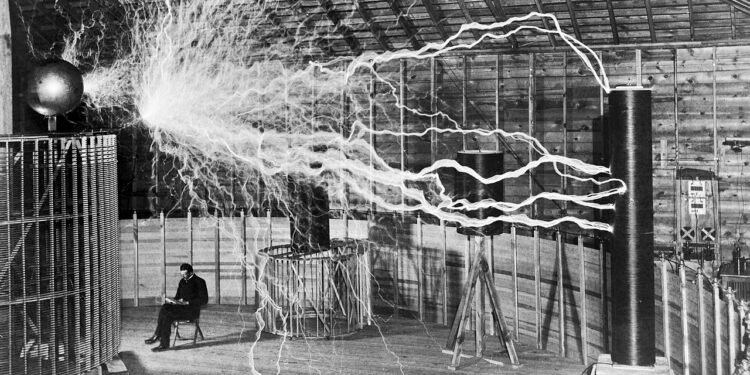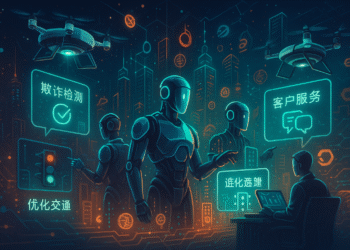Introduction: The Genius Who Saw the Future
Picture this: a world without cables, plugs, or power outlets. 🌍✨ Energy flows freely through the air, lighting up homes, powering vehicles, and fueling industries. Sounds like magic? For Nikola Tesla, it was a vision of the future—a future he worked tirelessly to create. ⚡
Tesla wasn’t just a dreamer—he was an inventor with over 300 patents to his name. From wireless energy to automation and even the internet, Tesla’s ideas form the foundation of much of today’s technology. Many of his 12 guiding postulates have already become reality. Let’s explore how his groundbreaking ideas continue to shape our world.
1. Tesla’s Global Wireless Energy Network: Boundless Power for Everyone 🌐⚡
Tesla envisioned a world where electricity could flow through the air, accessible to everyone, anywhere. His “System of Transmitting Electrical Energy” (U.S. Patent 645,576) laid out the foundation for a global wireless energy network powered by tall towers like his famous Wardenclyffe Tower.
Imagine this: You’re standing in the middle of a desert or a remote mountain, and your devices charge effortlessly from the air. Tesla dreamed of a world free from wires—a boundless energy grid that would unite humanity.
Modern Echoes
Today, companies like SpaceX and Solaren are exploring satellite power beaming, and WiTricity is pioneering wireless charging for devices and vehicles. Could Tesla’s vision of a global energy grid finally become reality?
💡 Thought Starter: If energy were as accessible as Wi-Fi, would it unite us or create new challenges? Share your thoughts below!
2. The Wireless World: Tesla’s Dream of an Invisible Power Grid ⚡🌍
Tesla’s dream of a “wireless world” stemmed from his invention of the Tesla Coil (U.S. Patent 1,119,732), capable of generating and transmitting high-voltage electricity.
How It Worked: Tesla believed the Earth itself could act as a giant conductor. By sending electrical currents through the Earth’s surface and atmosphere, he aimed to deliver energy anywhere in the world. The Wardenclyffe Tower was the first bold step toward this vision, but financial and political challenges cut it short.
Where Are We Now?
Today, technologies like Powercast and Ossia are turning Tesla’s vision into reality, allowing wireless energy transfer for modern devices. Researchers are even working on ways to wirelessly charge electric vehicles and buildings.
💬 Discussion Prompt: What would life be like if electricity were as accessible as Wi-Fi? Could this change the way we live—or create new challenges?
3. Harnessing the Power of Nature: Tesla’s Renewable Energy Vision 🌊⚡
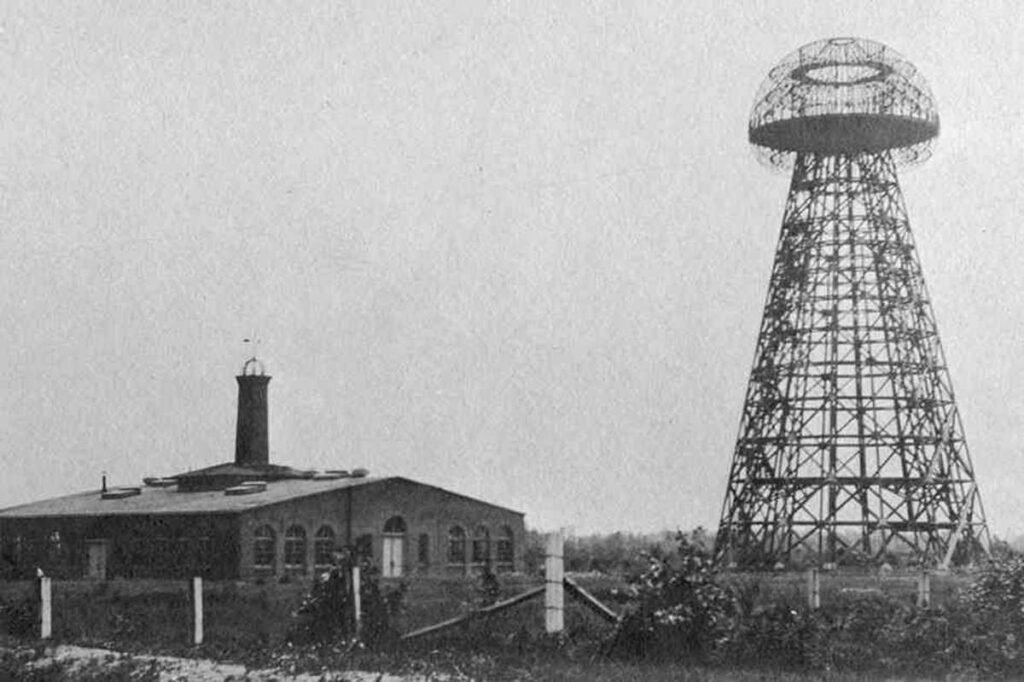
Tesla wasn’t just focused on electricity—he dreamed of tapping into the limitless energy of nature. His “Apparatus for the Utilization of Radiant Energy” (U.S. Patent 685,957) theorized capturing cosmic rays and atmospheric energy.
Key Achievements:
- Niagara Falls Power Plant: Tesla’s work on the Niagara Falls Hydroelectric Plant in 1895 turned water into one of the world’s first large-scale renewable energy systems.
- Cosmic Rays & Static Energy: Tesla experimented with devices to capture energy from the Earth’s atmosphere and the sun, envisioning a world powered sustainably.
Modern Relevance
From space-based solar power to wind energy, Tesla’s ideas are central to today’s clean energy revolution. However, fossil fuels still dominate global energy production.
💡 Challenge for Readers: Are we doing enough to honor Tesla’s vision of a sustainable, renewable future? What should we prioritize next?
4. Tesla’s Internet: A Century Ahead of Its Time 🌐📡
Tesla dreamed of instant global communication decades before the internet was invented. His “Method of Signaling” (U.S. Patent 649,621) and World Wireless System were blueprints for data transmission, enabling people to share messages, images, and even ideas instantly.
Tesla’s Prediction: “When wireless is perfectly applied, the whole Earth will be converted into a huge brain.”
Modern Impact
Today’s internet, smartphones, and IoT networks realize Tesla’s dream. But as connectivity grows, so do concerns about privacy, censorship, and inequality in access.
💬 Discussion Point: Is the internet living up to Tesla’s vision of a connected, equal world—or have we strayed too far?
5. Remote-Controlled Technology: Tesla’s Role in the Age of IoT 🚀✨
In 1898, Tesla amazed the world by demonstrating his remote-controlled boat, the “Teleautomaton” (U.S. Patent 613,809). This wasn’t just a party trick—it was the first step toward drones, IoT, and AI-powered robotics.
What Tesla Envisioned:
- Drones patrolling the skies.
- Driverless cars navigating cities.
- Automated factories transforming industries.
Modern Reality
From AI-powered drones to autonomous vehicles and smart cities, Tesla’s remote-control vision has become the backbone of modern tech.
💡 Question: Has remote-control technology liberated us—or made us more dependent?
6. Machines That Free Us: Tesla’s Dream of Automation 🎨🤝
Tesla’s induction motor (U.S. Patent 381,968) automated tasks that once required immense labor, laying the foundation for today’s automated factories and AI systems.
Tesla’s Belief: Machines should liberate humans, not enslave them. Yet, in today’s hyper-connected world, many of us feel more tethered to work than ever.
💬 Open Debate: Is technology helping us live better lives—or just chaining us to new forms of work?
7. The Cosmic Key: Tesla’s Quest for Infinite Energy 🌌⚡
Tesla believed energy wasn’t just generated—it was everywhere, woven into the fabric of the universe. He called this unseen force “Aether” and theorized that it could power humanity forever.
Modern Parallels:
Quantum fields and zero-point energy echo Tesla’s ideas. Could this “invisible ocean” of energy solve our global energy crisis?
💬 Reflection: Is Tesla’s Aether the missing link to infinite, sustainable power?
8. Tesla’s Legacy: A Vision for Generations 🌍✨
Tesla wasn’t just an inventor—he was a dreamer who left us a roadmap for a better future. His 12 postulates challenge us to think boldly, dream without limits, and strive for harmony between humanity, technology, and nature.
Today, 7 of his postulates have shaped modern life. The remaining 5? They’re waiting for visionaries like you to make them real.
💡 Final Thought: Tesla’s vision wasn’t about gadgets—it was about humanity thriving in harmony with technology. Which part of his dream inspires you most? What’s your vision for the future? Let us know in the comments!




